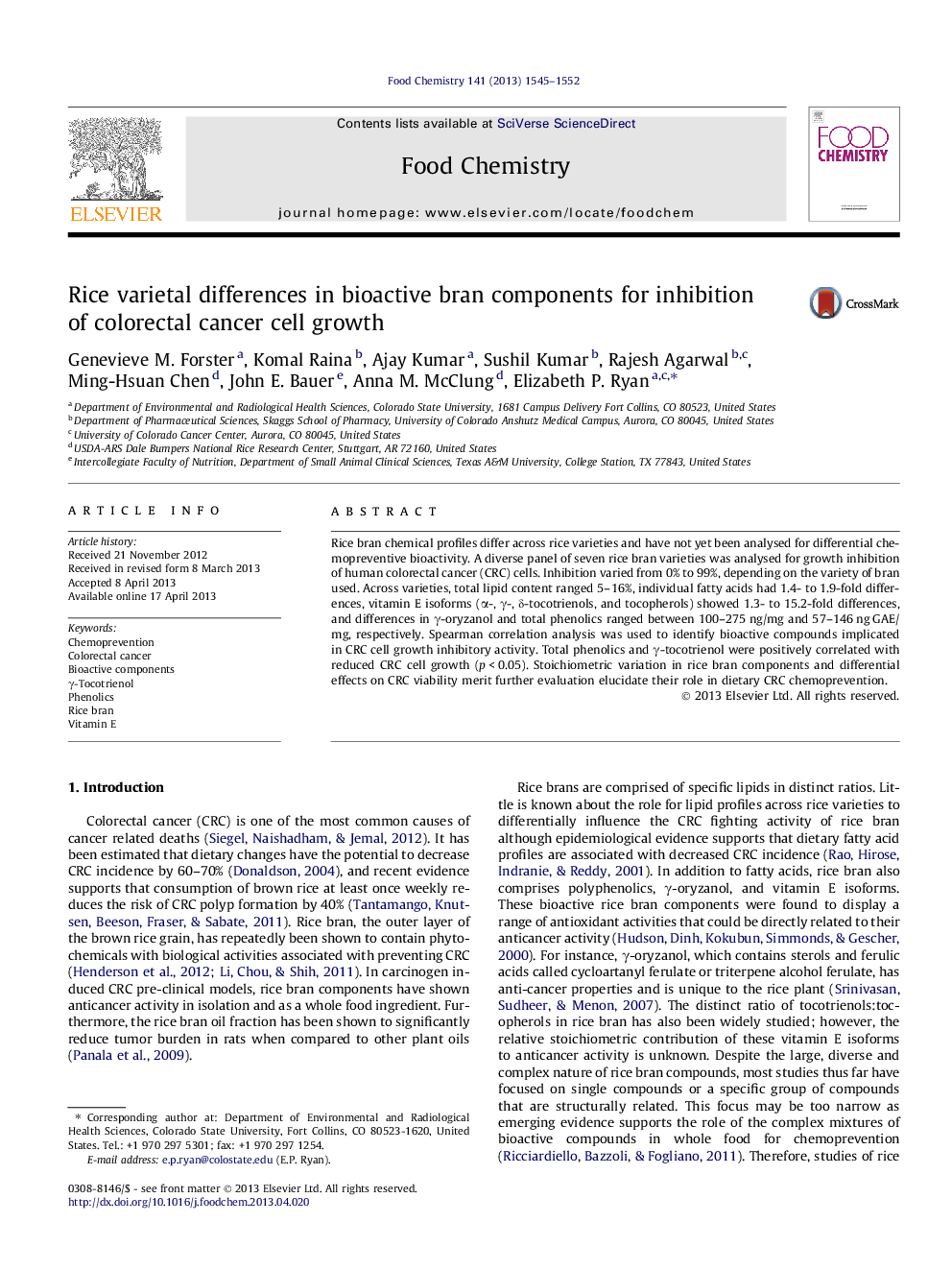| Article ID | Journal | Published Year | Pages | File Type |
|---|---|---|---|---|
| 1187183 | Food Chemistry | 2013 | 8 Pages |
•Rice bran extracts differentially inhibit colorectal cancer (CRC) cell growth.•Different rice varieties have unique lipophilic bioactive compounds.•Total soluble phenolic content was correlated with CRC cell inhibition.•Vitamin E isoforms γ-T3, α-T3, and α-T were correlated with CRC cell inhibition.•Rice bran chemoprevention is due to the complex phytochemical mixture.
Rice bran chemical profiles differ across rice varieties and have not yet been analysed for differential chemopreventive bioactivity. A diverse panel of seven rice bran varieties was analysed for growth inhibition of human colorectal cancer (CRC) cells. Inhibition varied from 0% to 99%, depending on the variety of bran used. Across varieties, total lipid content ranged 5–16%, individual fatty acids had 1.4- to 1.9-fold differences, vitamin E isoforms (α-, γ-, δ-tocotrienols, and tocopherols) showed 1.3- to 15.2-fold differences, and differences in γ-oryzanol and total phenolics ranged between 100–275 ng/mg and 57–146 ng GAE/mg, respectively. Spearman correlation analysis was used to identify bioactive compounds implicated in CRC cell growth inhibitory activity. Total phenolics and γ-tocotrienol were positively correlated with reduced CRC cell growth (p < 0.05). Stoichiometric variation in rice bran components and differential effects on CRC viability merit further evaluation elucidate their role in dietary CRC chemoprevention.
